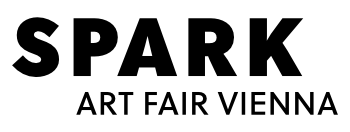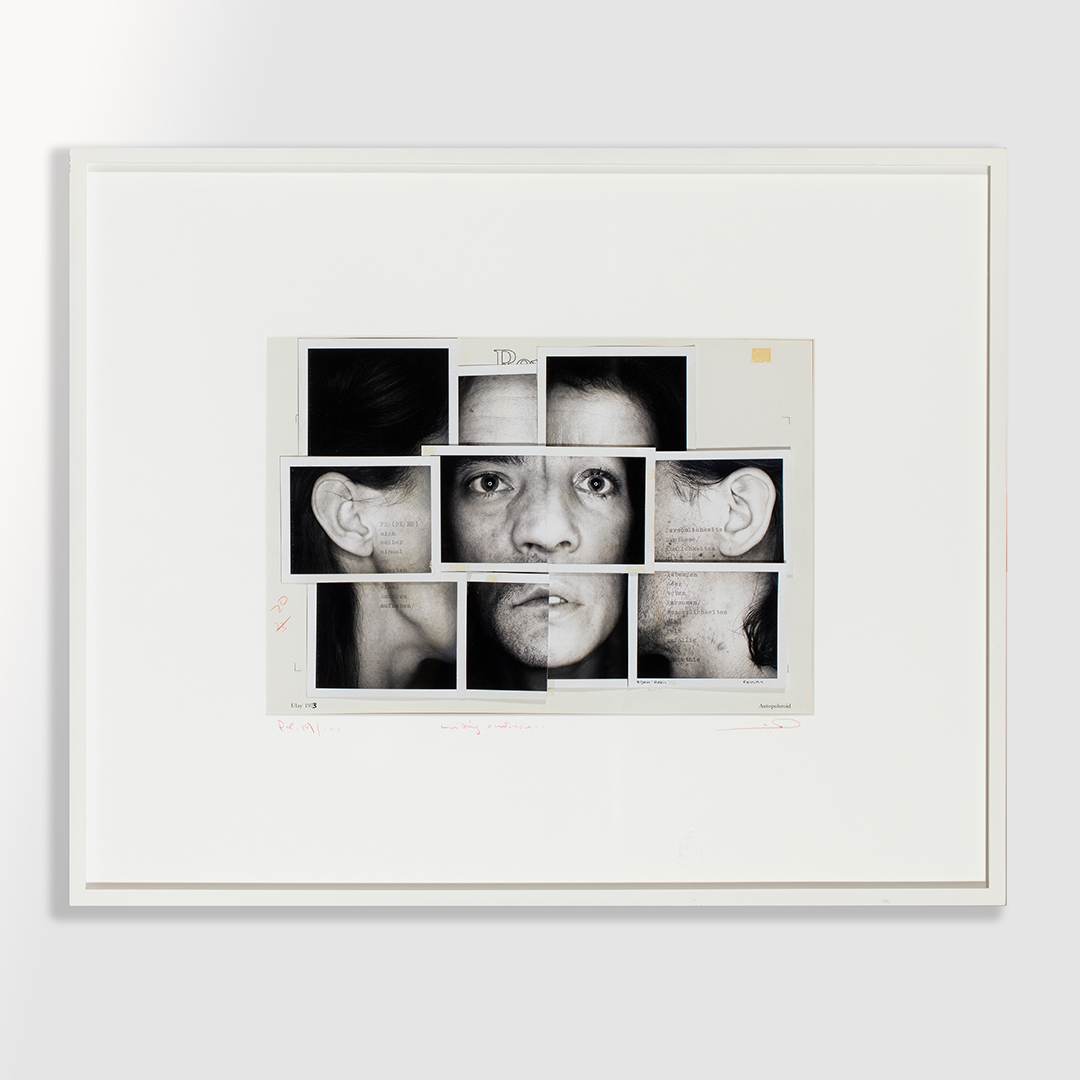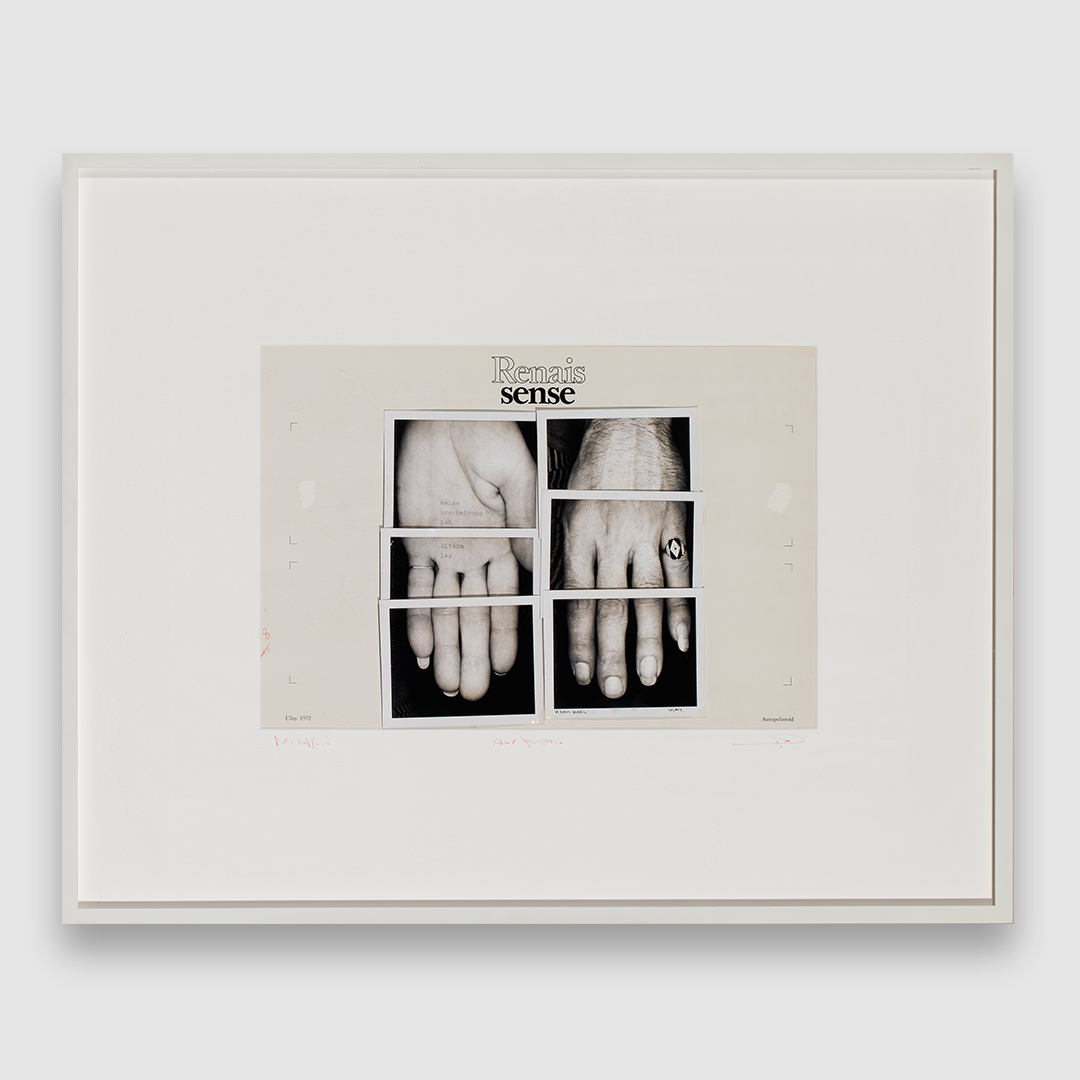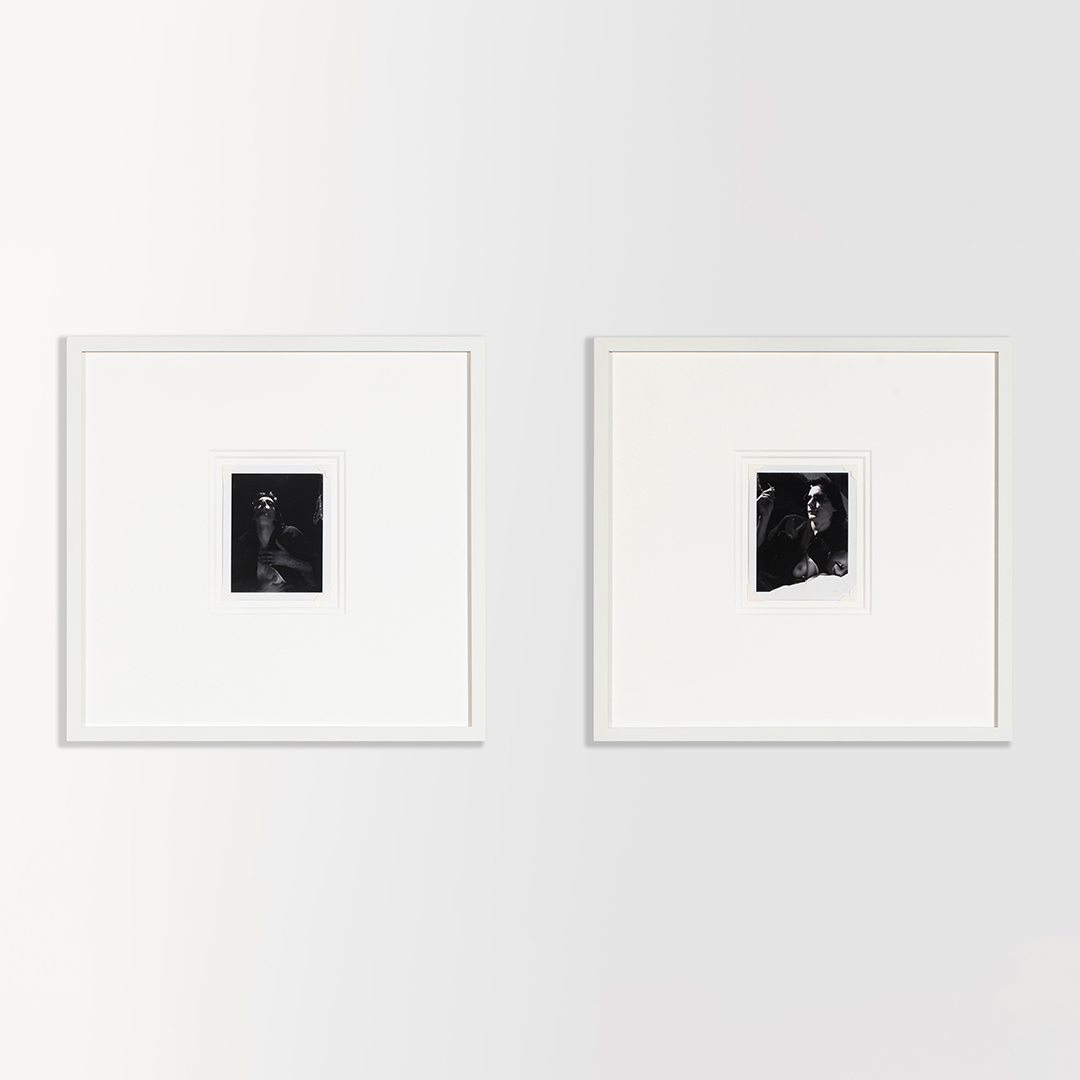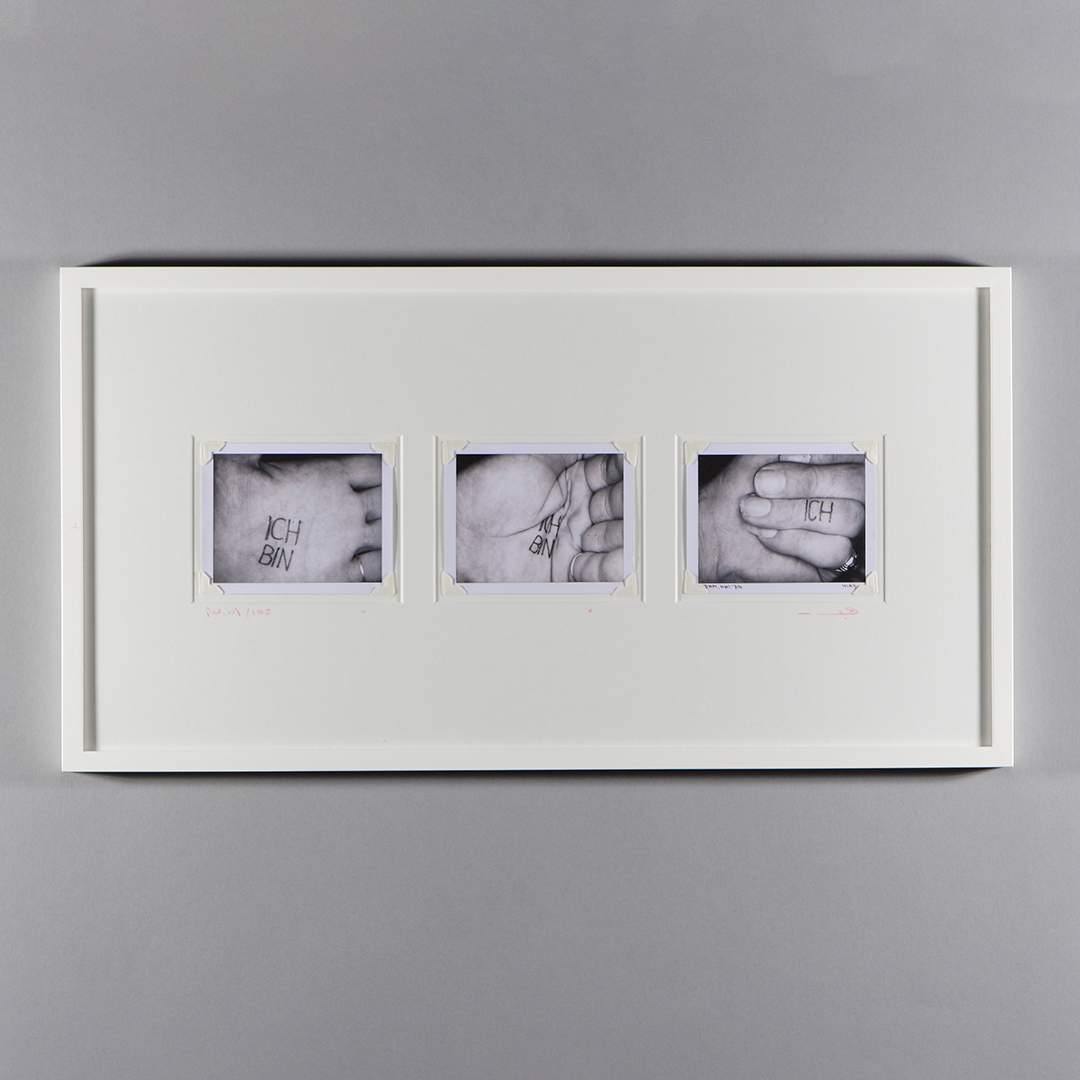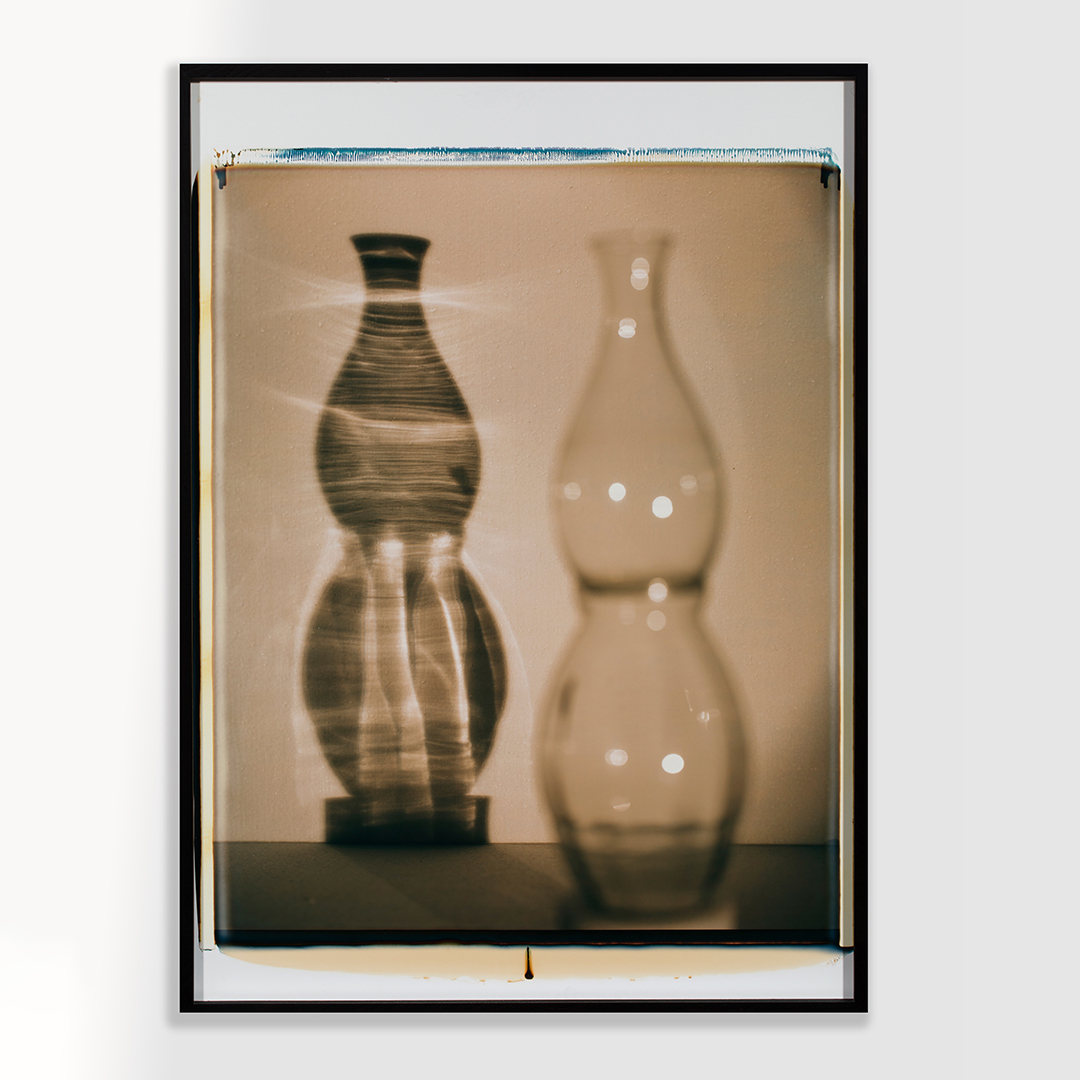KÖNIG GALERIE
ULAY
After Ulay’s critically acclaimed retrospective at Stedelijk Museum, we are proud to present the first-ever official gallery presentation of the iconic artist ULAY (1943–2020), Polaroid photography, performance and body art pioneers with König gallery.
The body as a reference, as a starting point, as his medium par excellence: the booth-presentation juxtaposes ULAY’s iconic early performative Polaroid photography and his physical transformations (of his own body) presented as collages and video, with less known works from the nineties, subtly reflecting Ulay’s inner states, while at the same time continuing recurring motifs from his oeuvre: bodily presence, vases as symbols of emptiness and fullness, memento mori. Exploring the limits of the Polaroid medium and playing with photography’s slippery identity between the real and the illusory, his early and later series, presented together, at once bear the facticity and transcend life.
Taking hundreds of self-portraits, each manipulated in a myriad of ways, Ulay, in the early seventies, developed an approach that was novel in both method and subject matter, using the camera as a tool to investigate and modify identity, whilst exploring socially constructed issues of gender. His identity search was a life-long project, closely connected to the process of »unlearning – forgetting the values by which I had justified myself, my commitment«. »What I reached was a lot more fluid and no longer as concrete. (…) I began to see that everything is in constant motion: life is change«.
Biography
ULAY (November 30, 1943–March 2, 2020) was the pioneer of polaroid photography, body and performance art.
Born as Frank Uwe Laysiepen in 1943 in Solingen, Germany, Ulay was formally trained as a photographer, and between 1968 and 1971, worked extensively as a consultant for Polaroid. In the early period of his artistic activity (1968–1976) he undertook a thematic search for understandings of the notions of identity and the body on both the personal and communal levels, mainly through series of Polaroid photographs, aphorisms, visual and concrete poetry, and intimate performances
From 1976 to 1988, Ulay collaborated with former partner Marina Abramović. Their 12-year relationship was one of the most fertile and celebrated artistic partnerships of the 20th century.
After breaking with Abramović, Ulay focused on photography, exploring the medium and its boundaries (several large format Polaroids and photograms), addressing the position of the marginalized individual in contemporary society (Can’t Beat the Feeling – Long Playing Record, 1992) and re-examining the problem of nationalism and its symbols (Berlin Afterimages, 1994–1995).
After four decades of living and working in Amsterdam, several long-term artistic projects in India, Australia and China, and a professorship of Performance and New Media Art at the Staatliche Hochschule für Gestaltung, Karlsruhe in Germany, Ulay died in Ljubljana, Slovenia in March 2020, in a city where he spent the last ten years of his life.
KÖNIG GALERIE
KÖNIG GALERIE was founded in Berlin by Johann König in 2002, and currently represents 40 international emerging and established artists, mostly belonging to a younger generation. The program’s focus is on interdisciplinary, concept-oriented and space-based approaches in a variety of media including sculpture, video, sound, painting, printmaking, photography and performance. In May 2015, KÖNIG GALERIE took up St. Agnes, a monumental former church built in the 1960s in the Brutalist style, where museum-like exhibitions take place in two different spaces, the former chapel and nave. In 2017, KÖNIG GALERIE opened KÖNIG LONDON in a former car park in Marylebone, London. In November 2019 KÖNIG TOKIO opened in Japan presenting artists that are based in Germany, Austria and Switzerland.
In April 2020, KÖNIG DIGITAL, the virtual gallery space, was launched with the aim to create experiences online. The digital visitor enters the exhibitions via the app KÖNIG GALERIE. KÖNIG DIGITAL presents digital solo and group shows by new media artists and by artists experimenting in the virtual space. In June 2020, MESSE IN ST. AGNES (MISA) was held for the first time, offering more than 200 artworks, from the primary and secondary market. In April 2021, KÖNIG joined forces with MCM and opened a new exhibition space for contemporary art in Seoul, Korea.
+49 30 2610 3028
Sonja Schacht
+49 172 185 13 88
ULAY
After Ulay’s critically acclaimed retrospective at Stedelijk Museum, we are proud to present the first-ever official gallery presentation of the iconic artist ULAY (1943–2020), Polaroid photography, performance and body art pioneers with König gallery.
The body as a reference, as a starting point, as his medium par excellence: the booth-presentation juxtaposes ULAY’s iconic early performative Polaroid photography and his physical transformations (of his own body) presented as collages and video, with less known works from the nineties, subtly reflecting Ulay’s inner states, while at the same time continuing recurring motifs from his oeuvre: bodily presence, vases as symbols of emptiness and fullness, memento mori. Exploring the limits of the Polaroid medium and playing with photography’s slippery identity between the real and the illusory, his early and later series, presented together, at once bear the facticity and transcend life.
Taking hundreds of self-portraits, each manipulated in a myriad of ways, Ulay, in the early seventies, developed an approach that was novel in both method and subject matter, using the camera as a tool to investigate and modify identity, whilst exploring socially constructed issues of gender. His identity search was a life-long project, closely connected to the process of »unlearning – forgetting the values by which I had justified myself, my commitment«. »What I reached was a lot more fluid and no longer as concrete. (…) I began to see that everything is in constant motion: life is change«.
Biography
ULAY (November 30, 1943–March 2, 2020) was the pioneer of polaroid photography, body and performance art.
Born as Frank Uwe Laysiepen in 1943 in Solingen, Germany, Ulay was formally trained as a photographer, and between 1968 and 1971, worked extensively as a consultant for Polaroid. In the early period of his artistic activity (1968–1976) he undertook a thematic search for understandings of the notions of identity and the body on both the personal and communal levels, mainly through series of Polaroid photographs, aphorisms, visual and concrete poetry, and intimate performances
From 1976 to 1988, Ulay collaborated with former partner Marina Abramović. Their 12-year relationship was one of the most fertile and celebrated artistic partnerships of the 20th century.
After breaking with Abramović, Ulay focused on photography, exploring the medium and its boundaries (several large format Polaroids and photograms), addressing the position of the marginalized individual in contemporary society (Can’t Beat the Feeling – Long Playing Record, 1992) and re-examining the problem of nationalism and its symbols (Berlin Afterimages, 1994–1995).
After four decades of living and working in Amsterdam, several long-term artistic projects in India, Australia and China, and a professorship of Performance and New Media Art at the Staatliche Hochschule für Gestaltung, Karlsruhe in Germany, Ulay died in Ljubljana, Slovenia in March 2020, in a city where he spent the last ten years of his life.
KÖNIG GALERIE
KÖNIG GALERIE was founded in Berlin by Johann König in 2002, and currently represents 40 international emerging and established artists, mostly belonging to a younger generation. The program’s focus is on interdisciplinary, concept-oriented and space-based approaches in a variety of media including sculpture, video, sound, painting, printmaking, photography and performance. In May 2015, KÖNIG GALERIE took up St. Agnes, a monumental former church built in the 1960s in the Brutalist style, where museum-like exhibitions take place in two different spaces, the former chapel and nave. In 2017, KÖNIG GALERIE opened KÖNIG LONDON in a former car park in Marylebone, London. In November 2019 KÖNIG TOKIO opened in Japan presenting artists that are based in Germany, Austria and Switzerland.
In April 2020, KÖNIG DIGITAL, the virtual gallery space, was launched with the aim to create experiences online. The digital visitor enters the exhibitions via the app KÖNIG GALERIE. KÖNIG DIGITAL presents digital solo and group shows by new media artists and by artists experimenting in the virtual space. In June 2020, MESSE IN ST. AGNES (MISA) was held for the first time, offering more than 200 artworks, from the primary and secondary market. In April 2021, KÖNIG joined forces with MCM and opened a new exhibition space for contemporary art in Seoul, Korea.
